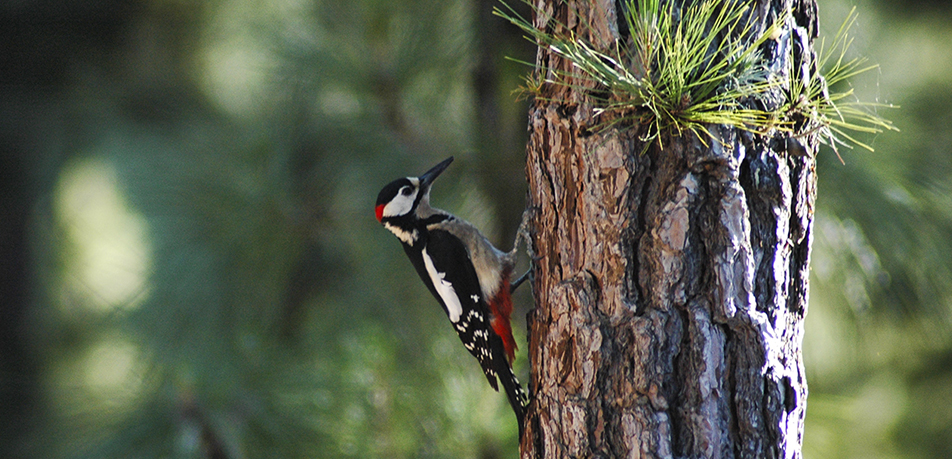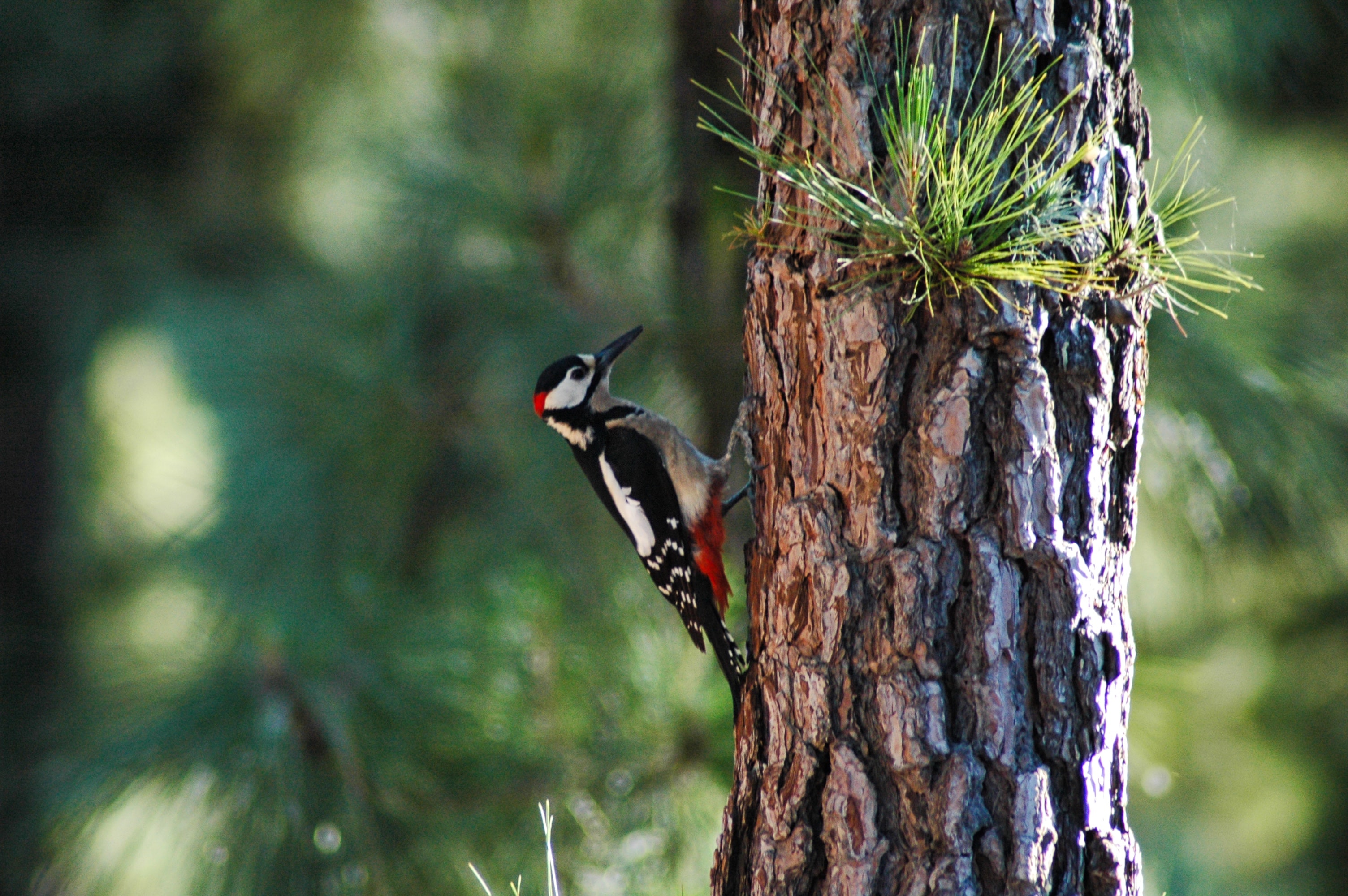The Great Spotted Woodpecker, Carpenter of the Forest

By Jose Luis Gallego, environmental communicator (@ecogallego)
Woodpeckers are among the great specialists of the Iberian fauna. This group of species, all of them exclusive forest dwellers, owe their name to their shared penchant for drilling holes into tree trunks and branches. They engage in this task almost constantly, thereby making it easy to locate them, because while doing so they emit a characteristic and unmistakable “drumming” sound.
Woodpeckers spend a good part of their day drilling into trunks in search of food, to mark their territory, or build nests. They also peck grooves into the wood which serve as a nutcracker of sorts: once the nut is wedged into the cavity, they use their beaks to break open their shells. This happens at two speeds: either at an intermittent yet constant (tac-tac-tac) or at a continuous (trrrr-trrrr-trrrr) rhythm.
A woodpecker produces this potent sound thanks to a spring-like feature in its neck, which the bird tenses by tilting its head back and then releasing it suddenly against the trunk of a tree. And to prevent the brain from knocking against the skull, nature has given the woodpecker a special membrane that protects it from these violent jolts.
Woodpeckers spend their time amid the branches of the tree canopy or clinging to trunks, moving up and down their length. Occasionally they will take short flights from tree to tree. They rarely leave the trees for the forest floor, which is why their distinctive drumming sound that echoes through the woods provides the best clue to finding them.
One of the most abundant groups of these birds are the spotted woodpeckers, which include various species of different sizes and similar plumage. The most common is the elegant great spotted woodpecker (Dendrocopos major).
Relatively large in size, as its scientific name indicates, the great spotted woodpecker is easily differentiated from other woodpeckers with which it shares a habitat, such as the green or black woodpecker, because of the distinctive colour and markings of its plumage. The back, tail, and cap (what ornithologists call the top part of the head) are a brilliant shade of black. The colour offers a sharp contrast to the shoulders, cheeks, and lower parts of its plumage, which are white.
The feathers above the beak, on the throat and chest are cream-coloured, turning more white towards the tail. The fluffy undertail covert is a vibrant blood red colour: it stands out like a stop light and, in the case of male birds, finds a matching detail at the nape. The long sturdy beak and the rigid, tapered tail are characteristics it shares with other woodpeckers. The great spotted woodpecker is 25 cm long with a wingspan of 40 cm.

A woodpecker on a tree
The great spotted woodpecker lives in all kinds of forests, from pinewoods to conifers, even in parks and gardens with plenty of trees. It prefers tall trees and can often be seen in poplar groves. On the Iberian peninsula, the largest distribution of spotted woodpeckers can be found in the northern half, from coastal pinewoods to mountain fir woods. In the southern part of the peninsula, they are limited to the most densely forested areas. Great spotted woodpeckers can be found on Gran Canaria and Tenerife, but not on the Balearic Islands.
They are essentially insectivores, with a diet consisting primarily of wood-eating insects, which woodpeckers find by digging their beak into the wood or under the bark. During the winter, they adapt their eating habits and subsist on all kinds of dried fruit: pinenuts, acorns, even walnuts and hazelnuts, which they open by wedging the nut into a crack in a tree trunk and then proceed to hammer with their beak until the shell breaks. They also seek out bird feeders in gardens, especially if these contain peanuts: they love them!
During the breeding season, and faced with the need of providing their chicks with protein, woodpeckers are known to plunder the nests of other birds, stealing their eggs and occasionally even their chicks. Great spotted woodpeckers begin mating in April when their drumming becomes particularly fast-paced and intense. During this time, the male excavates a deep nesting cavity in a tree trunk: a task he carries out with the skill of a woodworker wielding a burin.
In June, the female will usually lay up to half a dozen eggs in the well-appointed cavity at the end of the tunnel, which the couple will then incubate for a couple of weeks.
